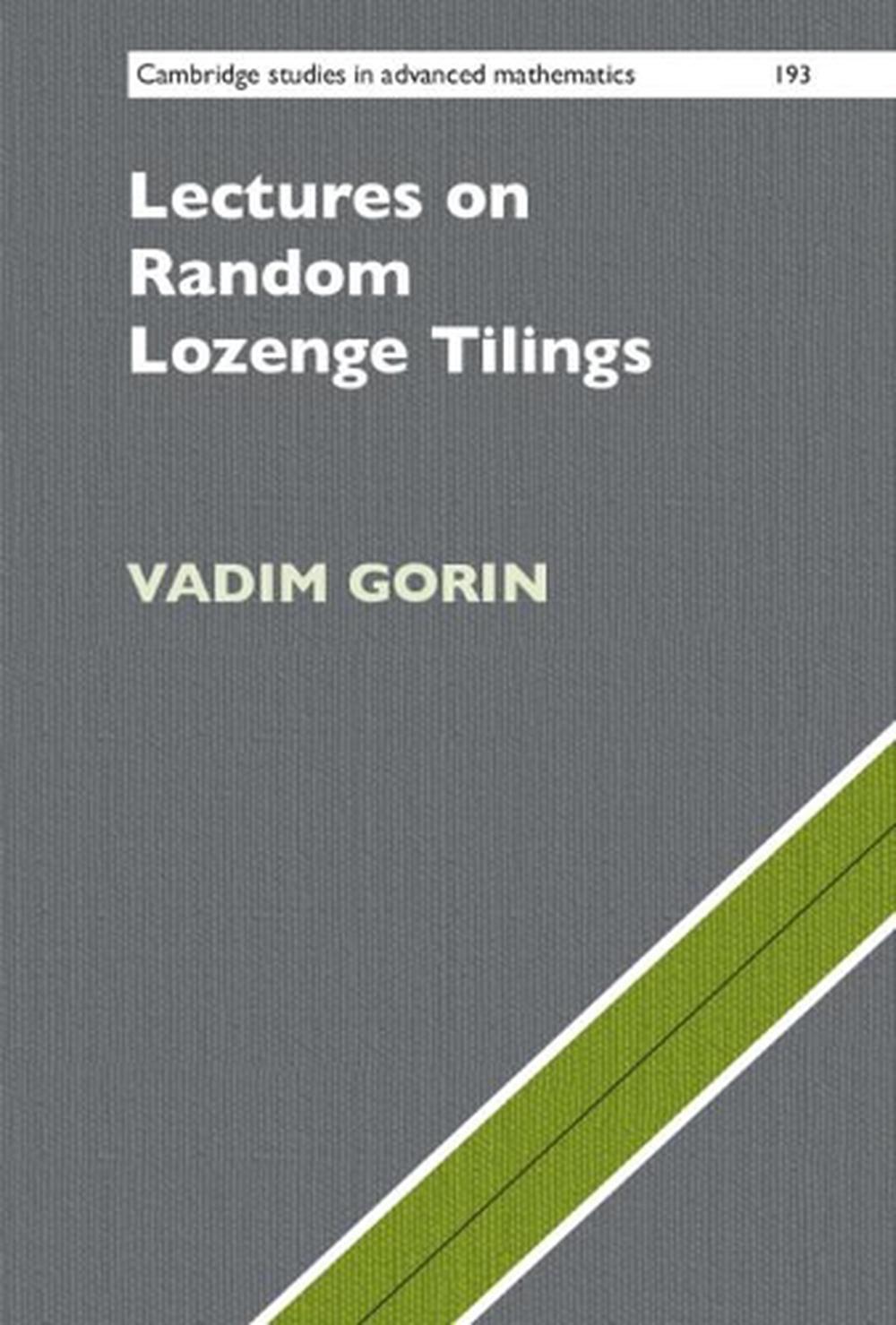
When you click on links to various merchants on this site and make a purchase, this can result in this site earning a commission. Affiliate programs and affiliations include, but are not limited to, the eBay Partner Network.
Lectures on Random Lozenge Tilings by Vadim Gorin (English) Hardcover Book

- Item No : 135641118694
- Condition : Brand New
- Brand : No brand Info
- Seller : the_nile
- Current Bid : US $81.01
-
* Item Description
-
The Nile on eBay

Lectures on Random Lozenge Tilings
by Vadim Gorin
There has been a tremendous growth in understanding of random tilings over the past 25 years. This book, the first dedicated to the topic, caters to both beginning graduate students (or advanced undergraduates) wanting to learn the basics and to mature researchers looking to widen their background knowledge.
FORMAT
HardcoverLANGUAGE
EnglishCONDITION
Brand New
Publisher Description
Over the past 25 years, there has been an explosion of interest in the area of random tilings. The first book devoted to the topic, this timely text describes the mathematical theory of tilings. It starts from the most basic questions (which planar domains are tileable?), before discussing advanced topics about the local structure of very large random tessellations. The author explains each feature of random tilings of large domains, discussing several different points of view and leading on to open problems in the field. The book is based on upper-division courses taught to a variety of students but it also serves as a self-contained introduction to the subject. Test your understanding with the exercises provided and discover connections to a wide variety of research areas in mathematics, theoretical physics, and computer science, such as conformal invariance, determinantal point processes, Gibbs measures, high-dimensional random sampling, symmetric functions, and variational problems.
Author Biography
Vadim Gorin is a faculty member at the University of Wisconsin–Madison and a member of the Institute for Information Transmission Problems at the Russian Academy of Sciences. He is a leading researcher in the area of integrable probability, and has been awarded several prizes, including the Sloan Research Fellowship and the Prize of the Moscow Mathematical Society.
Table of Contents
Preface; 1. Lecture 1: introduction and tileability; 2. Lecture 2: counting tilings through determinants; 3. Lecture 3: extensions of the Kasteleyn theorem; 4. Lecture 4: counting tilings on a large torus; 5. Lecture 5: monotonicity and concentration for tilings; 6. Lecture 6: slope and free energy; 7. Lecture 7: maximizers in the variational principle; 8. Lecture 8: proof of the variational principle; 9. Lecture 9: Euler–Lagrange and Burgers equations; 10. Lecture 10: explicit formulas for limit shapes; 11. Lecture 11: global Gaussian fluctuations for the heights; 12. Lecture 12: heuristics for the Kenyon–Okounkov conjecture; 13. Lecture 13: ergodic Gibbs translation-invariant measures; 14. Lecture 14: inverse Kasteleyn matrix for trapezoids; 15. Lecture 15: steepest descent method for asymptotic analysis; 16. Lecture 16: bulk local limits for tilings of hexagons; 17. Lecture 17: bulk local limits near straight boundaries; 18. Lecture 18: edge limits of tilings of hexagons; 19. Lecture 19: the Airy line ensemble and other edge limits; 20. Lecture 20: GUE-corners process and its discrete analogues; 21. Lecture 21: discrete log-gases; 22. Lecture 22: plane partitions and Schur functions; 23. Lecture 23: limit shape and fluctuations for plane partitions; 24. Lecture 24: discrete Gaussian component in fluctuations; 25. Lecture 25: sampling random tilings; References; Index.
Review
'The lectures provide connections between random tilings and many areas in mathematics and theoretical physics, and include an exhaustive reference list. Mathematicians and others interested in the hows and whys of this intriguing area would be well-served by consulting this text.' Thomas Polaski, Mathematical Reviews/MathSciNet
'It seems that the reviewed book is the first introductory text about this fascinating topic. The release of this book is a great event for everyone interested in this problem.' Anton Shutov, zbMATHPromotional
This is the first book dedicated to reviewing the mathematics of random tilings of large domains on the plane.
Promotional "Headline"
This is the first book dedicated to reviewing the mathematics of random tilings of large domains on the plane.
Description for Bookstore
There has been a tremendous growth in understanding of random tilings over the past 25 years. This book, the first dedicated to the topic, caters to both beginning graduate students (or advanced undergraduates) wanting to learn the basics and to mature researchers looking to widen their background knowledge.
Description for Library
There has been a tremendous growth in understanding of random tilings over the past 25 years. This book, the first dedicated to the topic, caters to both beginning graduate students (or advanced undergraduates) wanting to learn the basics and to mature researchers looking to widen their background knowledge.
Details
ISBN1108843964Author Vadim GorinPages 200Publisher Cambridge University PressSeries Cambridge Studies in Advanced MathematicsLanguage EnglishYear 2021ISBN-10 1108843964ISBN-13 9781108843966Format HardcoverSeries Number 193Imprint Cambridge University PressPlace of Publication CambridgeCountry of Publication United KingdomPublication Date 2021-09-09AU Release Date 2021-09-09NZ Release Date 2021-09-09UK Release Date 2021-09-09Illustrations Worked examples or ExercisesAlternative 9781108921183DEWEY 516.132Audience Professional & Vocational


-
- The Lost Super Foods
- $ 37.00
- The Self-Sufficient Backyard
- $ 37.00
- A Navy Seals BUG IN GUIDE
- $ 39.00
- Childrens Books Phonics Lot 60
- $ 34.89
















